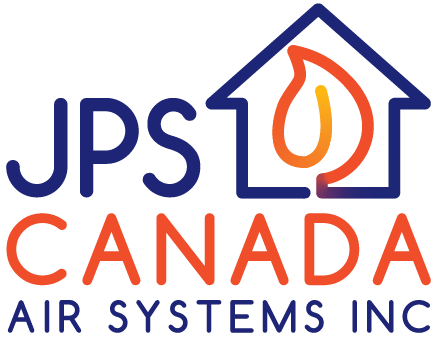FREQUENTLY ASKED QUESTIONS
-
After every fan coil or heat pump maintenance call, JPS Canada staff leave behind a paper report for residents. The purpose of this report is to ensure you have a clear record of the work that’s been done - as well as to draw your attention to any pertinent issues with your HVAC system.
This page is designed to help you get the most out of your report by explaining how your HVAC system works, as well as outlining the types of issues we’re looking for.
-
A fan coil unit consists of a heating and/or cooling coil and fan. It is part of an HVAC system and is often found in residential, commercial, and industrial buildings. The two most common designs found in high-rises are horizontal fan coils and vertical fan coils. Vertical fan coils can also be split into two sub designs: blow-through (where the fan sits below the coil) and draw-through (where the fan sits above the coil). Learn more here.
-
Heat Recovery Ventilators (HRVs) and Energy Recovery Ventilators (ERVs) are similar devices in that they both supply air to your home and exhaust stale air. They also recover energy from the exhaust air in the process. The primary difference between the two is that an HRV transfers heat while an ERV transfers both heat and moisture. Learn more here.
-
When JPS staff clean your fan coil unit they also perform a long list of checks and tests to ensure your unit is operating optimally. The report they leave behind outlines the results of the various tests. If your report states NO ISSUES FOUND then your unit should operate smoothly for the upcoming season. Learn more here.
-
While most high-rise buildings will regularly service the units’ fan coils, homeowners are responsible for maintaining their fan coil unit’s filter quality. As a general rule, you should replace your air filters every 30 to 60 days. If you have pets, allergies or large potted plants, you will want to change your filters more often. If you have low occupancy and zero pets, you may be able to get away with changing them less often. Learn more here.
-
For most fan coil units, you should use anything between a non-MERV-rated Poly Wire (which is most commonly used) to a pleated filter with a max rating of MERV 8. Most importantly, you want to make sure the filter used is sized specifically for your equipment. Learn more here.
-
Your unit’s condensate drain pan is located below your water coil. The coil is a square or rectangular shaped device that is made up of rows of copper piping running through layers of aluminum fins. Its exact location depends on the type/model of fan coil installation in your home.
In a draw-through vertical fan coil, the coil and pan will be located in the lower section of the cabinet - and the pan should become visible once you remove the air filter. In a blow-through vertical fan coil, the coil and pan will be in the middle/upper section of the cabinet - but the pan will only be visible after removing the front baffle or access panel. Learn more here.
-
This answer depends entirely on your preferences. Bottom line - set the temperature for what is most comfortable for you! Condos are different from houses in that they often have large windows, less ducting, ERVs/HRvs, multiple HVAC units and an overall different building design. As a result, the traditional temperature rules - or energy-saving measures - do not really apply. If you have large, south-facing windows, you may want to set your thermostat a little lower (or not turn your heat on at all.) If you have a solarium that gets chilly in the winter, you may need to crank the heat. It really depends on your personal preferences and your suite conditions. Learn more here.
-
Because fan coil units use water to heat your home, it is really important to prevent your waterlines from freezing. If the temperature is at or below zero, take care to make sure all windows and patio doors are closed - if they are left open by just one inch a pipe can freeze within minutes. Additionally, keep your thermostat above 17 degrees Celsius in cold weather, so the zone valve effectively cycles on and off. And above anything else, do NOT turn your thermostat off completely!
-
Your fan coil may not only provide heating and cooling to your suite - it might also provide fresh air. If you are living in a condo that was built within the last 10 years, your fan coil may be integrated with your bathroom exhaust fan that is tied into an ERV or HRV system. These systems employ a constant run blower that continuously circulates fresh air into your suite.
-
If you have the Honeywell Suite Pro Thermostat TB8575/6575, you want to set the System Mode to “cool” in summer, and “heat” in winter, while keeping the Fan Mode on “auto”. Learn more here.
-
Yes! We offer an extensive inventory of certified replacement parts, including Enolgas fan coil actuators in 3-way or 2-way models (R281P00, R2822P00.) All our parts are factory-direct replacements and come with full manufacturers’ warranties. We also offer parts from Honeywell, Schneider Electric, Erie, Airia, Reversomatic, Aurum, Unilux and Zonex Ventilation. Learn more here.
